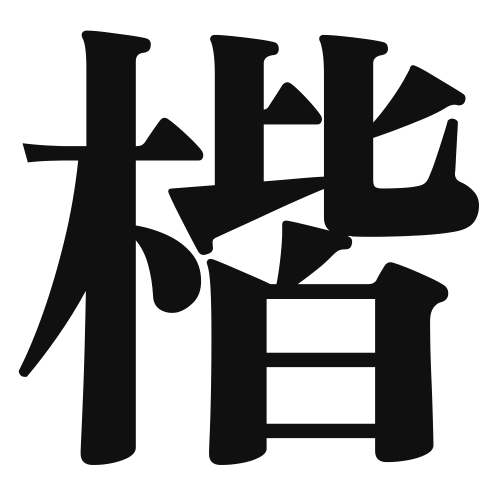1. Overview of Meaning
The kanji “楷” (kai) primarily means “standard” or “model.” It is often associated with a style of writing known as “楷書” (kaisho), which refers to the standard script used in calligraphy and printing.
2. Formation and Radical
Formation of the Kanji: The kanji “楷” is a phonetic-ideographic character (形声文字). It combines the radical for “tree” (木) with a phonetic component that suggests its pronunciation.
Radical: The radical of “楷” is 木, which means “tree.” This radical often relates to words associated with wood or trees.
3. Examples of Usage
Common Words and Phrases: “楷書” (kaisho) is a commonly used term that refers to the standard script in Japanese calligraphy.
Example Sentence in Daily Conversation: “彼の字は楷書でとても読みやすいです。” (His handwriting is in kaisho, and it’s very easy to read.)
4. Synonyms and Antonyms
Similar Kanji: A similar kanji is “模” (mo), which means “model” or “pattern.” While both kanji relate to the idea of standards, “模” often emphasizes imitation or representation, whereas “楷” focuses on the standard itself.
Antonym: An antonym could be “乱” (ran), which means “disorder” or “chaos.” This contrasts with the idea of “楷,” which represents order and standardization.
5. Cultural and Historical Background
Relation to Japanese Culture: The kanji “楷” is significant in Japanese calligraphy, where the kaisho style is taught as a foundational script for beginners.
Proverbs and Idioms: While there may not be specific proverbs that directly use “楷,” the concept of adhering to standards and models is prevalent in Japanese culture, emphasizing the importance of precision and clarity in communication.
